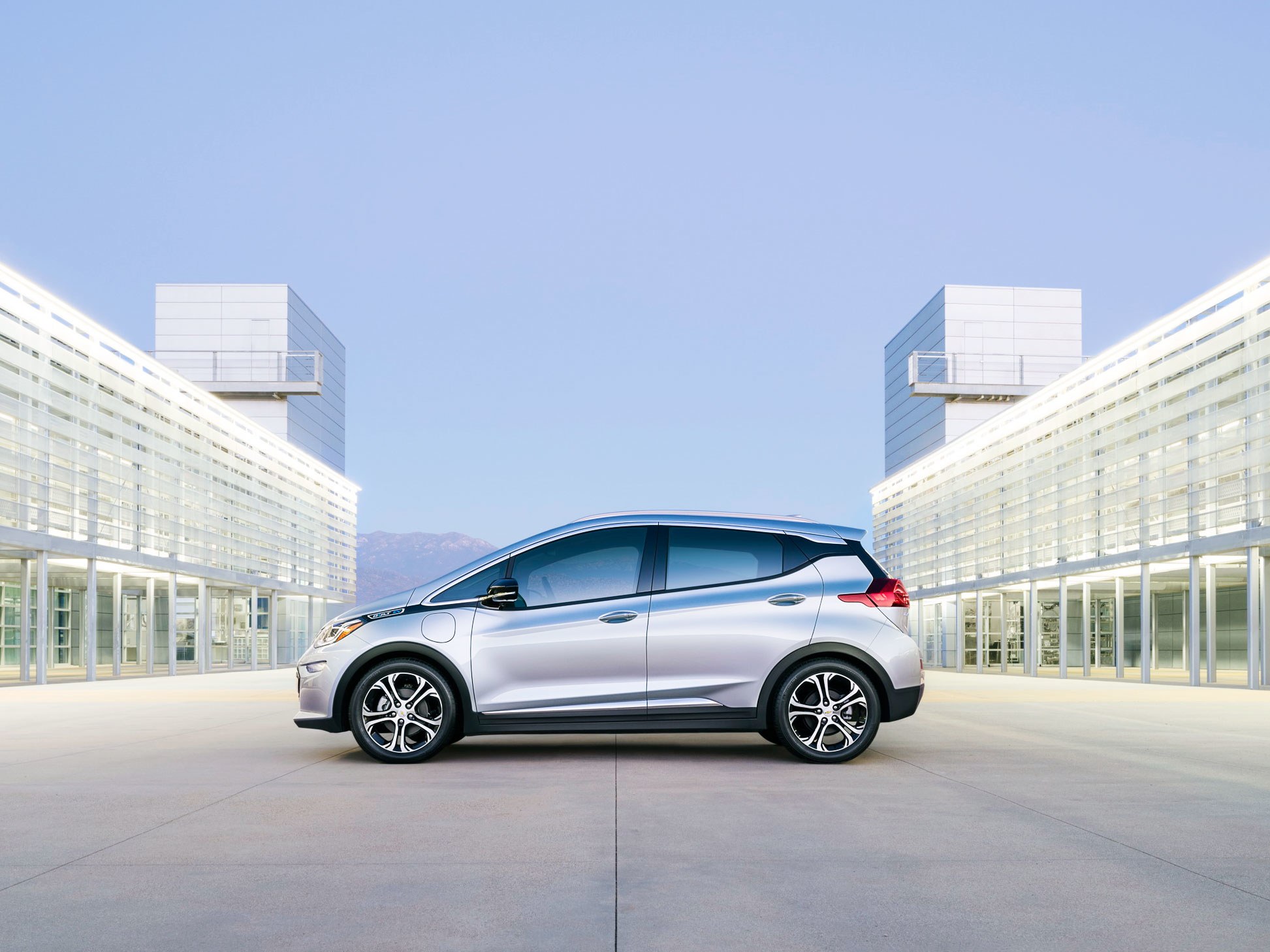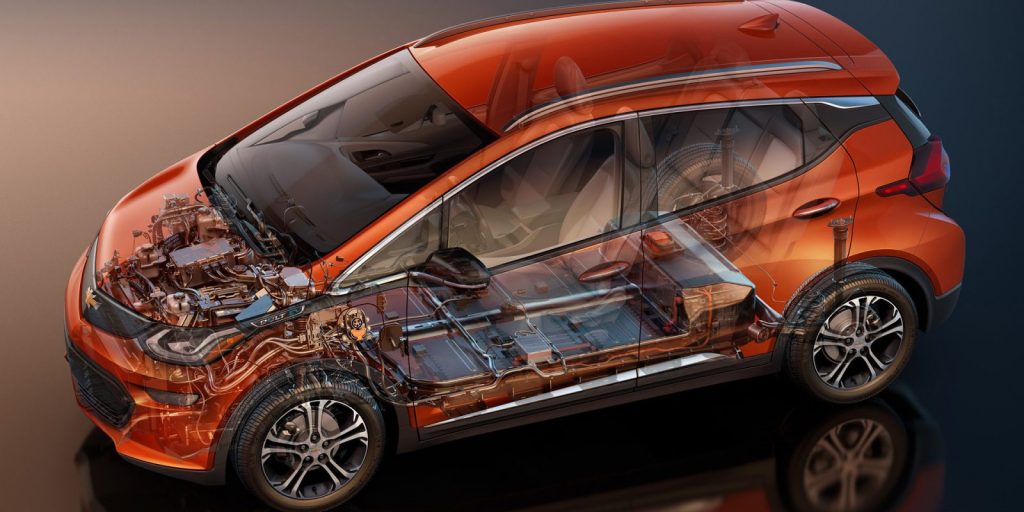
AFTER MORE THAN a century peddling vehicles that pollute the atmosphere, General Motors is ending its relationship with gasoline and diesel. GM, the American automotive giant said Monday, it is working toward an all-electric, zero-emissions future. That starts with two new, fully electric models next year—then at least 18 more by 2023.
The U.S. largest automaker will build the battery-powered cars based on the Chevrolet Bolt, an electric hatchback that went on sale earlier this year. By 2023, GM plans to introduce a total of 20 electric vehicles, saying the company’s entire lineup will be electrified at some time in the future.
“General Motors believes in an all-electric future,” said Mark Reuss, GM’s head of product development. “Although that future won’t happen overnight, GM is committed to driving increased usage and acceptance of electric vehicles through no-compromise solutions that meet our customers’ needs.”
GM said its future electric vehicles will utilize batteries or hydrogen fuel cells. The company has been working on hydrogen technology, including a project with the U.S. Army to test a Chevrolet Colorado pickup truck powered by hydrogen fuel cells Opens a New Window.
Also on Monday, GM revealed a concept vehicle called the Silent Utility Rover Universal Superstructure (SURUS), a hydrogen four-wheel vehicle built on a heavy-duty truck frame and driven by two electric motors. GM envisions SURUS as a delivery vehicle, truck or ambulance.
Some of the future electric vehicles will utilize a new architecture that sports a longer range than the Chevrolet Bolt, which can travel for an estimated 238 miles on one charge.

That product onslaught puts the company at the forefront of an increasingly large crowd of automakers proclaiming the age of electricity and promising to move away from gasoline- and diesel-powered vehicles. In recent months, Volvo, Aston Martin, and Jaguar Land Rover have announced similar moves. GM’s declaration, though, is particularly noteworthy because it’s among the very largest automakers on the planet. It sold 10 million cars last year, ranging from pickups to SUVs to urban runabouts.
“General Motors believes the future is all-electric,” says Mark Reuss, the company’s head of product. “We are far along in our plan to lead the way to that future world.”
Reuss did not give a date for the death knell of the GM gas- or diesel-powered car, saying the transition will happen at different speeds in different markets and regions. The new all-electric models will be a mix of battery electric cars and fuel cell-powered vehicles.
To be sure, GM’s sudden jolt of electricity is planned with its shareholders in mind. The Trump Administration may be moving to roll back fuel efficiency requirements in the US, but the rest of the world is insisting on an electric age. France, Great Britain, the Netherlands, and Norway have all said they plan to ban the sale of gas and diesel cars in the coming decades. More importantly, China—the world’s largest car market—and India, a rising star, plan to join them. No automaker can compete globally without a compelling stable of electric cars.
GM intends to grab as large a slice of the Chinese market as possible. It has previously announced plans to launch 10 electric or hybrid electric cars in the country by 2020. This summer, it started selling a two-seat EV there, for just $5,300. Last year, it sold more cars in China (3.6 million) than it did in the US (3 million).
The crucial question for the American automaker will be how, exactly, to make money from all these cars. By one report, GM loses $9,000 on each Chevy Bolt it sells. Reuss’ strategy hinges on bringing costs down thanks to steadily dropping battery prices, more efficient motors, and lighter cars. Massive scale and global supply chains helps, too. “This next generation will be profitable,” he says. “End of story.”
It’s not impossible. “If they’ve really been laying this groundwork, they could be closer to not just having this tech but having a profitable and high volume way of supplying it,” says Karl Brauer, an auto industry analyst with Kelley Blue Book.
FOLLOW US ON FACEBOOK FOR MORE LOGISTICS NEWS
General Motors’ history hasn’t been especially kind to electric mobility. Its invention of the automatic starter helped kill the first wave of electric cars at the start of the 20th century. This is the company that experimented with battery power in the EV-1, only to recall the two-seater from its owners, crush them all, and pile the carcasses up in a junkyard. In the first years of the 21st century, while Toyota was making hybrids popular with the Prius, GM was hawking the Hummer.
Over the past decade, the Detroit giant has positioned itself for a different sort of future. First came the hybrid electric Chevy Volt. Then came GM’s great coup, the Chevy Bolt, the 200-mile, $30,000 electric car that hit market long before Tesla’s Model 3. GM is seriously pursuing semi-autonomous and fully driverless cars. It offers the first car on US roads with vehicle-to-vehicle communication capability. Now, it talks about its plans to eliminate vehicle pollution, congestion, and traffic deaths.
“GM has the ability to get all of us to that future so much faster,” Reuss says. Now it just has to deliver—and make enough money doing it to stick around for that future.
GM’s plans come a day before executives from rival Ford (F) are set to give a presentation on the company’s strategy. Ford has already divulged some of its own electric vehicle plans. The company said Monday it’s creating an internal unit called “Team Edison” to study electric cars and will make a crossover with a range of 300 miles. Ford expects to launch a dozen other battery-powered cars in the next five years.








